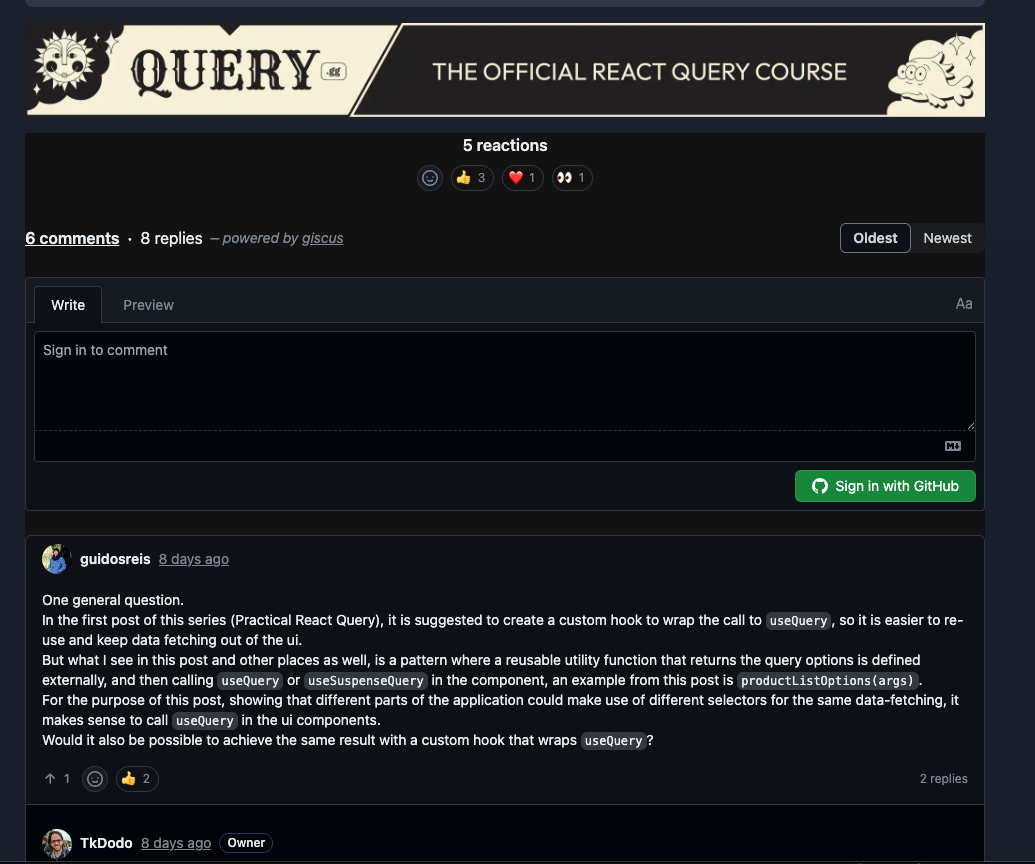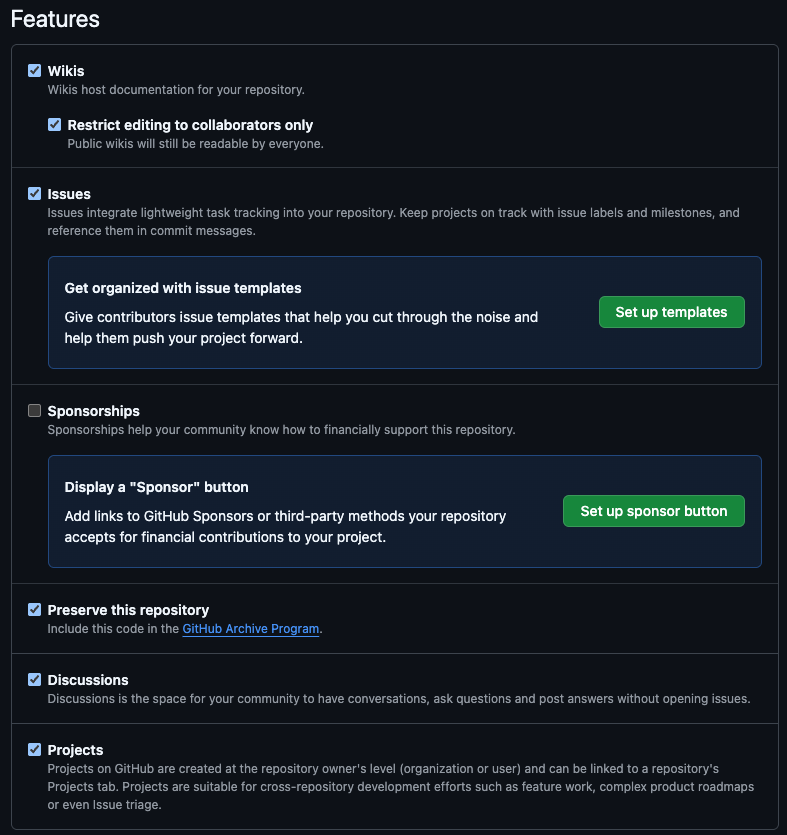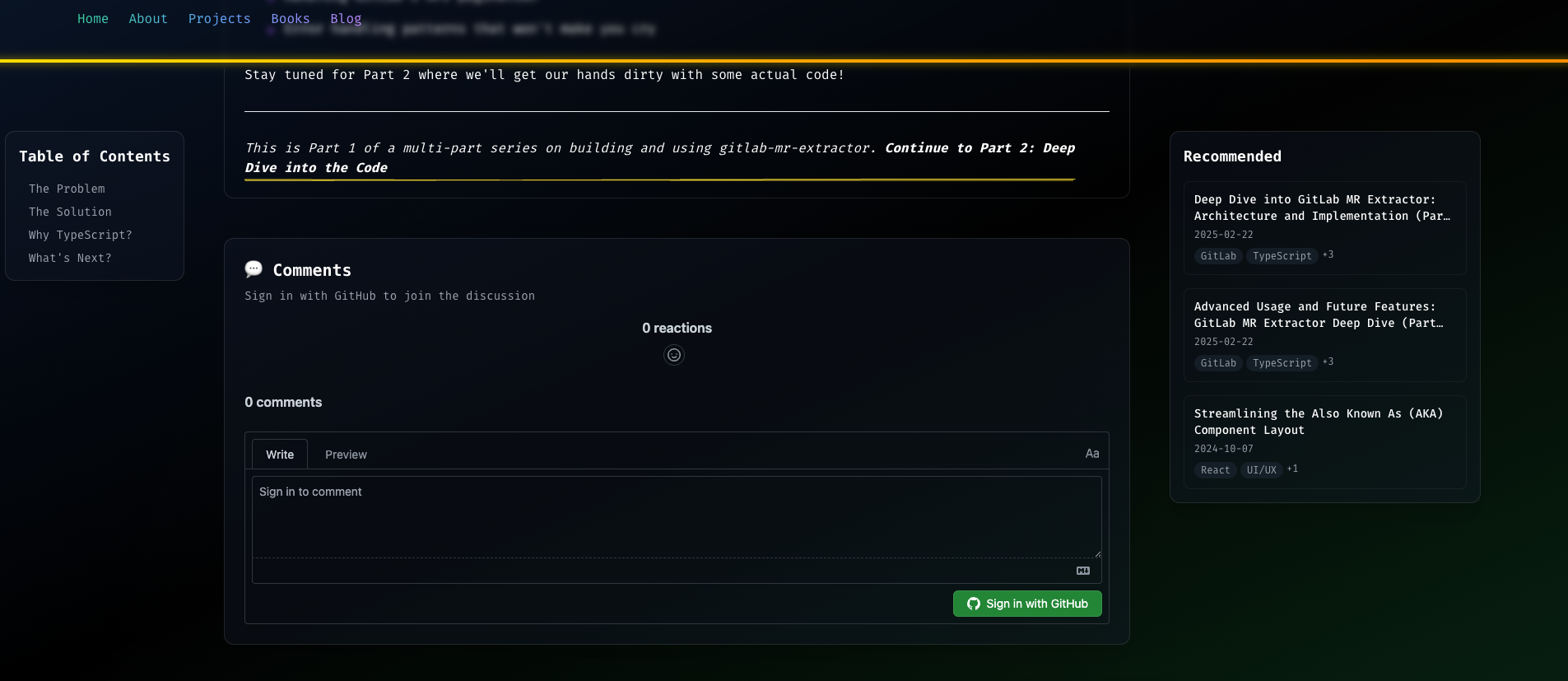From One-Way Blog to Interactive Community: Why I Chose Giscus for Developer Comments
The Problem: When Your Blog Becomes a Dead End
After building the core features of my portfolio website markdown support, different sections, clean design, I had to stop working on the project to focus on work and my university thesis. But one thing always stuck in my mind: I didn't want my blog to be one-directional.
You know the feeling. People read your content, and if they want to discuss something, they have to hunt down your email, search for your social media handles, or just... give up. It happened with me with most of the personal blogs I read and I got a few queries like that, and it felt good to me every time.
I wanted my blog to be interactive. I wanted people to discuss the content, whether I was right or wrong, if something could be done better. Most importantly, I wanted every individual post to have its own discussion, abstracted from others.
My First Attempt: The Custom Solution Trap
Without any research (rookie mistake), I spun up a PostgreSQL database instance and started building a comment component from scratch. User authentication, comment storage, moderation, spam prevention, the whole nine yards. Then reality hit. Work deadlines, thesis pressure, and the complexity of building a robust comment system made me abandon the project entirely.
Sound familiar? Here's what I was signing up for:
-
Database management: Comments, users, sessions, replies
-
Authentication system: User registration, login, password resets
-
Spam prevention: Manual moderation, filtering algorithms
-
Security concerns: SQL injection, XSS attacks, data breaches
-
Backup strategies: What happens when the database fails?
-
Scaling issues: What if a post goes viral?
For a simple portfolio blog, this was overkill.
The Discovery: How TkDodo's Blog Changed Everything
Fast forward to recently. I was reading TkDodo's excellent blog on React Query, diving deep into React Query Selectors, when I scrolled to the comments section.

I liked how the comments looked clean, professional, and integrated seamlessly with the design. But I didn't see any sign-in buttons on the blog, registration forms, or the typical comment system bloat. Yet there were active discussions, threaded replies, and what looked like real developer engagement.
Questions immediately popped into my head:
- How is he handling data transfer?
- How are user profiles enabled without a sign-in function?
- Where is this data being stored?
Then I saw it: "powered by giscus" written in small letters at the bottom. Following the trail led me to the giscus GitHub page, and it checked all my boxes. But I'm a thorough developer, so I researched the alternatives.
Why Giscus Over the Alternatives
Utterences and Discus were the alternatives that I could find. I wasn't the only developer facing this decision. Jake Lee documented his migration from Utterances to Giscus, highlighting that giscus uses GitHub Discussions instead of Issues and supports threaded replies. Rob Hyndman migrated from Disqus citing giscus's lightweight nature and lack of tracking.
As the creator of giscus writes in his blog GitHub Discussions are designed specifically for conversations, making them the natural choice for blog comments. As per a custom solution goes, I wanted to finish my project and not reinvent the wheel by building a comment system from scratch.
Implementation: From Idea to Working Comments
Here's exactly how I implemented giscus on my portfolio:
Step 1: Repository Setup
Enable GitHub Discussions on your repository:
- Go to
https://github.com/your-username/your-repo/settings - Scroll to "Features" section
- Check "Discussions"

Create a comment category (optional but recommended):
- Go to your repository's Discussions tab
- Create a new category called "Blog Comments"
- Set it as the default for new discussions
Step 2: Giscus Configuration
Install the Giscus app on your repository:
- Visit giscus.app
- Connect your GitHub account
- Select your repository
Configure your preferences:
tsxRepository: your-username/your-repo Page ↔️ Discussions Mapping: Discussion title contains page pathname Discussion Category: Blog Comments (or General) Features: Enable reactions, Emit discussion metadata Theme: Choose based on your site design
Copy the generated script tag - you'll need this for integration.
Step 3: React Component Implementation
Giscus also has a react component which you can just plug into your project along with the correct environment variables or the setup script. Here's the React component I built for my Next.js portfolio:
tsx'use client' import Giscus from '@giscus/react' interface GiscusCommentsProps { slug: string title: string className?: string } export default function GiscusComments({ slug, title, className = '', }: GiscusCommentsProps) { return ( <section className={`comments-section mt-8 md:mt-12 ${className}`} aria-label={`Comments for ${title}`} > <div className='border border-white/10 rounded-xl p-5 md:p-6 shadow-xl bg-gray-900/40 backdrop-blur-sm'> <div className='mb-4'> <h3 className='text-xl font-mono font-bold text-white mb-2'> 💬 Comments </h3> </div> <Giscus id='comments' repo={ (process.env.NEXT_PUBLIC_GISCUS_REPO as `${string}/${string}`) || 'brgv-code/sutra' } repoId={process.env.NEXT_PUBLIC_GISCUS_REPO_ID || ''} category={process.env.NEXT_PUBLIC_GISCUS_CATEGORY || 'Announcements'} categoryId={process.env.NEXT_PUBLIC_GISCUS_CATEGORY_ID || ''} mapping='pathname' strict='0' reactionsEnabled='1' emitMetadata='1' inputPosition='bottom' theme='transparent_dark' lang='en' loading='lazy' /> </div> </section> ) }
Step 4: Environment Variables
Create a .env.local file with your giscus configuration:
tsxNEXT_PUBLIC_GISCUS_REPO=your-username/your-repo NEXT_PUBLIC_GISCUS_REPO_ID=your_repo_id_from_giscus_app NEXT_PUBLIC_GISCUS_CATEGORY=Blog Comments NEXT_PUBLIC_GISCUS_CATEGORY_ID=your_category_id_from_giscus_app
You can get these values from the giscus.app configuration page.
Step 5: Integration with Blog Posts
In your blog post component:
tsximport GiscusComments from '@/components/GiscusComments' export default function BlogPost({ params }: { params: { slug: string } }) { const post = getPostBySlug(params.slug) return ( <article className='max-w-4xl mx-auto px-4 py-8'> <header className='mb-8'> <h1 className='text-3xl font-bold mb-4'>{post.title}</h1> <time className='text-gray-600'>{post.date}</time> </header> <div className='prose dark:prose-invert max-w-none' dangerouslySetInnerHTML={{ __html: post.content }} /> {/* Comments Section */} <GiscusComments slug={params.slug} title={post.title} className='mt-12' /> </article> ) }
What I Learned: The Benefits in Practice

For Readers
- Zero friction: No new accounts to create
- Familiar interface: GitHub's discussion UI they already know
- Professional identity: Comments tied to their GitHub profile
- Rich formatting: Full markdown support with syntax highlighting
- Proper notifications: GitHub's notification system actually works
For Me as a Developer
- Zero maintenance: No database to manage or backup
- Built-in moderation: GitHub's spam detection and user blocking
- Version controlled comments: All discussions backed up in Git
- Professional discussions: Higher quality conversations from verified developers
- No vendor lock-in: If I ever want to migrate, all data stays in my repo
Performance Impact
- Lazy loading: Comments only load when users scroll to them
- Small bundle: Minimal JavaScript footprint
- CDN delivery: Served from GitHub's global infrastructure
- No database queries: Zero impact on my site's response time
Common Issues and Solutions
Issue 1: "Discussion Not Found"
Problem: Category mismatch between giscus config and GitHub repository.
Solution: Double-check that your category name in environment variables exactly matches what you created in GitHub Discussions.
Issue 2: Comments Not Loading
Troubleshooting checklist:
-
Repository is public
-
Discussions are enabled in repository settings
-
Giscus app is installed on your repository
-
Environment variables are correctly set
-
No console errors in browser dev tools
Issue 3: Theme Not Matching
Problem: Giscus theme doesn't match your site's dark/light mode.
Solution: Use preferred_color_scheme for automatic theme switching, or
implement dynamic theme changing:
tsx// Dynamic theme switching const theme = isDarkMode ? 'dark' : 'light' script.setAttribute('data-theme', theme)
Final Thoughts
What started as a need for basic interactivity turned into discovering the perfect solution for developer blogs. Giscus eliminates all the complexity of traditional comment systems while providing a superior experience for both readers and content creators.
If you're building a developer blog and want comments that your audience will actually use, give giscus a try. Your future self (and your readers) will thank you.
This implementation powers the comment system on this very blog. Try it out by leaving a comment below - no new accounts needed if you're already signed into GitHub!
💬 Comments